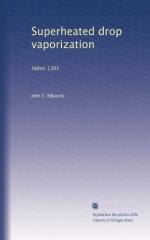|
This section contains 539 words (approx. 2 pages at 300 words per page) |

|
The chlorofluorocarbons (CFCs) are a family of organic compounds containing carbon, hydrogen (usually), and either chlorine or fluorine, or both. The members of this family can be produced by replacing one or more hydrogen atoms in hydrocarbons with a chlorine or fluorine atom. In the simplest possible case, treating methane (CH4) with chlorine yields chloromethane, CH3Cl. Treating this product with fluorine causes the replacement of a second hydrogen atom with a fluorine atom, producing chlorofluoromethane, CH2ClF.
This process can be continued until all hydrogen atoms have been replaced by chlorine and/or fluorine atoms. By using larger hydrocarbons, an even greater variety of CFCs can be produced. The compound known as CFC-113, for example, is made from ethane (C2H6) and has the formula C2F3Cl3.
Over the last three decades, the CFCs have become widely popular for a number of commercial applications. These applications...
|
This section contains 539 words (approx. 2 pages at 300 words per page) |

|


